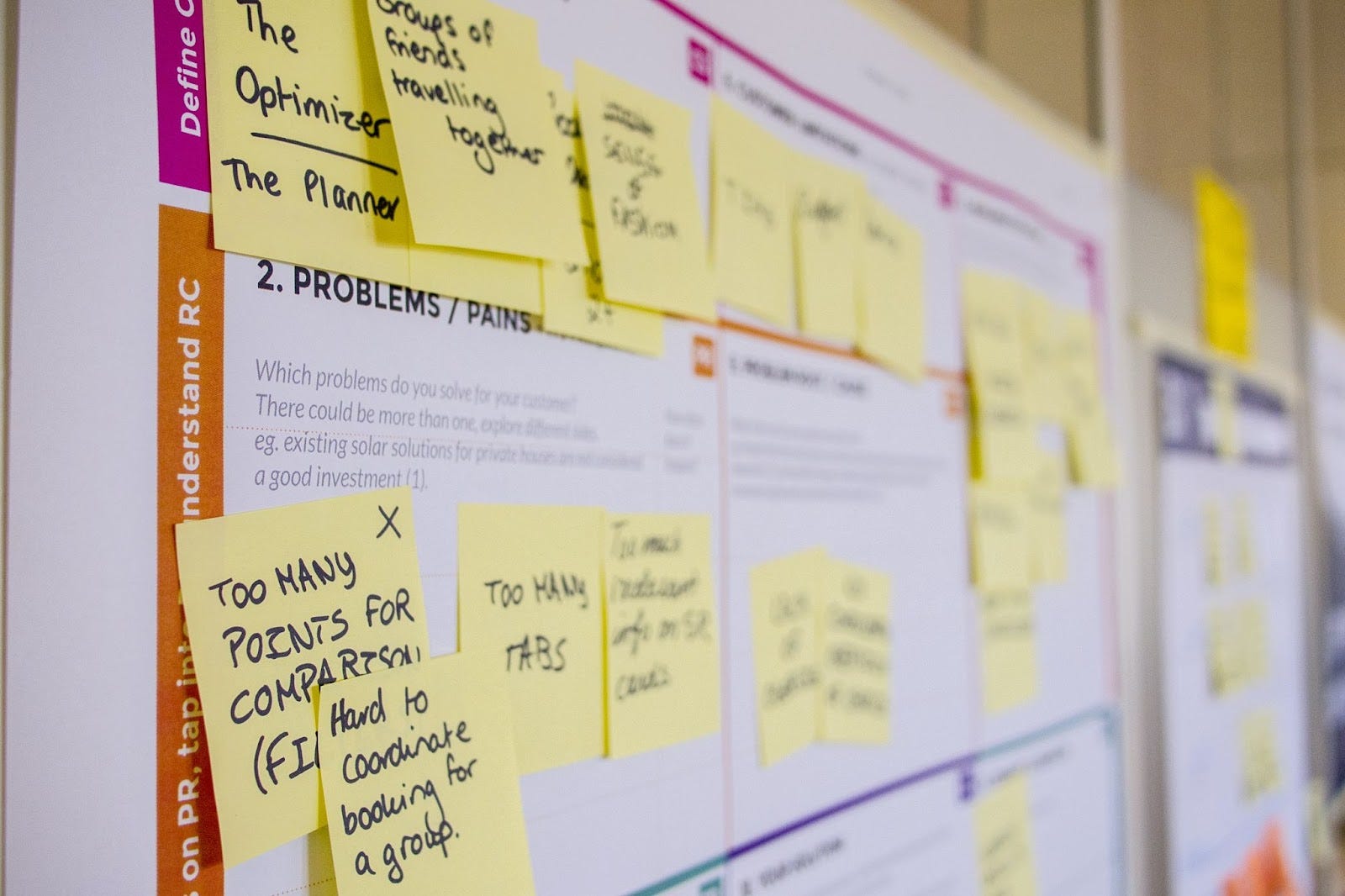There’s absolutely nothing that will crush a business quicker than an unforeseen outage. The goal of a business continuity plan (BCP) is to maintain operations during an emergency or disaster. By having a BCP in place, businesses can protect themselves from the unexpected and keep their doors open.
A BCP typically contains all the necessary information needed to keep a business running in the event of an emergency. This includes contact information for key personnel, alternative work locations, data backup procedures, and more.
While it’s impossible to plan for every possible contingency, a well-crafted BCP can help a business weather almost any storm. By being prepared, businesses can avoid the costly downtime that can result from an unplanned interruption in service and stay agile enough to pivot if necessary.
In this article, we’ll dig a little deeper and explain:
- What is business continuity?
- Why is it important?
- What goes into business continuity planning?
- The key components of a BCP
- How to create a BCP
- Some challenges you may face along the way
Ready? Let’s dive right in!
What is business continuity?
Have you ever ordered a product or service, only to have them unable to deliver what you paid for? If so, then you know how frustrating it can be when a business unexpectedly goes under or loses the ability to fill orders.
Business continuity is the process of maintaining and recovering operations in the event of an interruption. This could be anything from a natural disaster to a power outage, data breach, or even the death of a key employee.
Why is it important?
For businesses, contingency planning is essential to maintaining operations and minimizing downtime in the face of an unexpected event. No business is immune to disasters, no matter how big or small.
Over the last few years, as people were forced indoors and industry had to change, more emphasis has been placed on business continuity and disaster recovery.
In 2021, a study from Accenture found that 83 percent of risk managers had updated their business continuity strategy in the previous 12 months. Without adequate planning, businesses could face massive setbacks, such as:
- Lost customers: In today’s world, customers have more options than ever before. If they can’t get what they need from your business, they’ll go elsewhere.
- Brand damage: A major outage or data breach can damage your business’s reputation and it may be difficult to recover.
- Employee safety: Your employees are your most valuable asset. In the event of an emergency, you need to make sure they’re safe and have the resources they need to do their jobs.
- Financial loss: Downtime can be expensive, and in some cases, it may not be possible to recoup lost revenue.
- Operational problems: An interruption in service can cause a ripple effect that disrupts your supply chain and throws off your entire operation.
In short, business continuity management is important because it helps companies stay up and running during an emergency. By proactively creating a plan, you can avoid the costly downtime that can result from an unplanned interruption in service.

What is a business continuity plan (BCP)?
It’s not good enough to just have an idea of what you would do in your head. A BCP means documenting your processes and having a plan in place so that you can act quickly and decisively in the event of an emergency or disaster.
By having a BCP in place, businesses can increase their resilience against the unexpected, mitigate risk, and keep their doors open.
Key components of a BCP
While every plan will differ based on the specific needs of a company, there are a few key things that every good BCP will include.
- An inventory of all critical business functions and their dependencies
- A risk assessment of the potential threats to those functions
- The steps necessary to keep those functions running in the event of an emergency
- Contact information for key personnel
- Alternative work locations
- Data backup procedures
Let’s dig a little deeper into each of these and see how they work.
Inventory of business functions
The first step in any good business continuity plan is to take inventory of all the critical functions of your business and their dependencies. This means understanding which processes are essential to keeping your business running and which ones can be put on hold in the event of an emergency.
For example, if you’re a manufacturing company, your production line is probably going to be at the top of your list of critical functions. But that production line is going to have a lot of dependencies, like raw materials, power, and a workforce.
A few questions you can ask when examining each function:
- How long can we go without this function?
- What are the dependencies of this function?
- What is the impact on the business if this function is unavailable?
- How difficult would it be to bring this function back online?
By understanding the answers to these questions, you can start to prioritize which functions are most critical to your business and need to be included in your BCP.
Risk assessment
After you’ve identified your critical functions, the next step is to assess the risks to those functions. This means understanding what could potentially go wrong and interrupt the flow of those functions.
There are a few different ways to approach this:
- Brainstorming with your team: What are some potential disasters that could strike? This could be anything from a natural disaster like a hurricane or earthquake to a man-made disaster like a fire or power outage.
- Identifying single points of failure: What are the key components of each function? If any of those components were to fail, what would be the impact on the function?
- Conducting a business impact analysis: This is a more formal approach where you quantify the potential impacts of an interruption to each function. Make sure you don’t get bogged down in the data and forget the plan!
Once you’ve identified the risks to your critical functions, you can start to develop plans for mitigating them.

Necessary steps
You have analyzed your various business functions and calculated various risk factors. Now you must develop strategies to protect your business operations from being disrupted. These shouldn’t be broad ideas but specific, actionable instructions. For example, you might:
- Develop an alternate site: If your business is based in New York City, what would happen if you had to evacuate due to a hurricane? Where would your employees go? How would they get there? You may want to consider developing an alternate work site outside of the city that can be used in case of emergency.
- Cross-train employees: If key personnel are unavailable, it’s important to have employees who can step in and fill those roles. This may require additional training, but it’s worth it to have a well-oiled machine that can keep running even when things go wrong.
- Invest in redundant systems: When it comes to data storage and backup, you can never be too careful. Investing in redundant systems (such as offsite backups) can help ensure that your data is safe and sound even if your primary system fails.
These are just a few examples — the possibilities are endless, and will be specific to your business. The important thing is to have a plan in place so that you can keep your critical functions from being exposed.
Contact information
One of the most important aspects of any BCP is having up-to-date contact information for key personnel. This way, if something happens and people can’t get to work, you will still be able to reach them.
The best way to do this is to create a list of who needs to be contacted and how (email, phone, text, etc.) and then keep it in a central location that everyone has access to. You should also have a plan for how you will communicate with everyone if normal channels are down.
Alternative work locations
It’s one thing to have created a different work site for a specific business function but that isn’t going to be possible for every company or department. In these cases, it’s important to have a list of potential alternative work locations.
This might include working from home, going to a different office location, or using a co-working space. The key is to have options and be flexible so that you can continue to operate even if your normal workplace is unavailable.
Data backup procedures
More than ever, data loss can have a devastating impact on business continuity. Nearly 40 percent of small and mid-sized businesses are never able to reopen following a natural disaster, and another 25 percent fail within a year after reopening.
A huge reason for that is because of a lack of data recovery, something that bigger corporations can shell out the money for but smaller businesses often can’t. This is why it’s so important to have a data backup plan in place.
There are several ways to do this, including using cloud-based storage, external hard drives, or even just printing out important documents. The key is to have multiple copies in different locations so that you can be sure you will be able to access your data if something happens to your primary copy.

How to create a BCP
With all of that to consider, it may seem like a daunting task to create a comprehensive strategy. Don’t worry, we’re here to help you with a handy business continuity plan checklist, smartly called DISASTER!
Here we go:
- Define your company’s critical functions. This is the first and most important step in creating a continuity plan. You need to know what needs to be done for your business to continue running during an interruption.
- Identify which team members are responsible for each function. Clear responsibility will help ensure that tasks are completed efficiently and effectively if someone is unable to do their job.
- Streamline procedures for how each function should be completed. This step is important for ensuring that your employees know what to do and how to do it if they are unable to complete their tasks in the usual way.
- Assign responsibility for each task. Make sure everyone understands exactly what their job will be in case of a disaster.
- Share a communications plan. This will ensure that everyone knows what is happening and can stay up-to-date on changes.
- Test the plan. This is a vital step to make sure that everything works the way it should.
- Examine the plan regularly. This will help ensure that it stays up-to-date and relevant.
- Renovate the cracks. If you see a problem, don’t hesitate to allocate resources to make sure it can be fixed immediately. There is no telling when an issue will present itself, so you can’t wait around.
Keep that in mind when creating your business continuity plan and you’ll be able to avoid DISASTER when it strikes!
Challenges you may face
There is no limit to the number of problems a business might face when creating a BCP but we can help by pointing out a few common mistakes and challenges that might arise. Such as:
- Scope: Determining which business functions are critical and need to be protected can be difficult. There is a danger of including too much or too little in the plan.
- Complexity: The procedures for carrying out the plan need to be clear and concise. If they are too complicated, employees will not be able to follow them during a time of crisis.
- Cost: Creating a comprehensive BCP can be expensive. There is a cost associated with creating the plan, testing it, and maintaining it.
- Change: Businesses are constantly changing and evolving. This means that the BCP needs to be updated regularly, usually through a collaborative process, to ensure that it is still relevant.
- Communication: It is important to communicate the plan to all employees. If they are not aware of the plan, they will not be able to implement it during a time of crisis.
Creating a business continuity plan is a vital part of any business. It can help to protect your employees, customers, and reputation in the event of an interruption. While it may seem like a daunting task, it is possible to create a comprehensive and effective plan with the help of our checklist.
